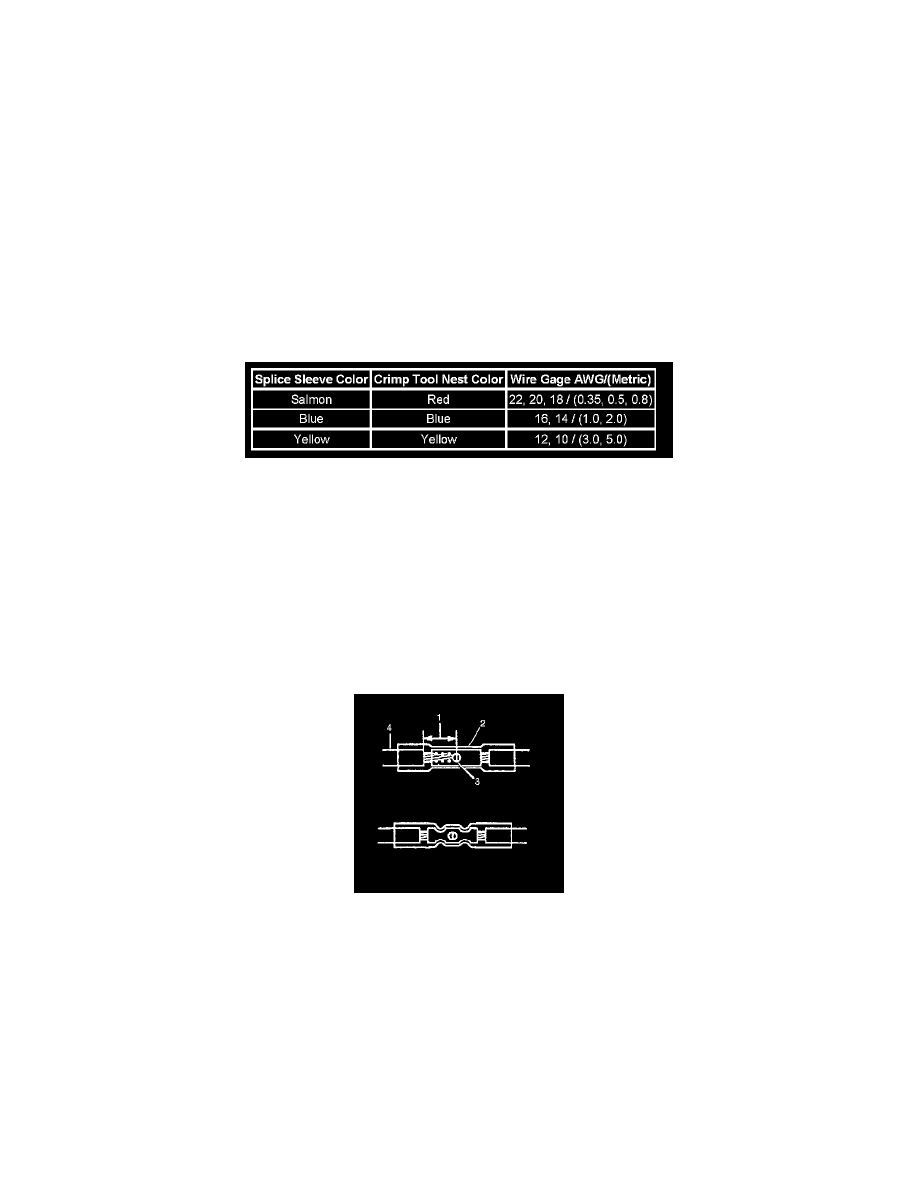ION L4-2.2L VIN F (2004)

CONNECTOR POSITION ASSURANCE (CPA)
The connector position assurance (CPA) is a small plastic insert that fits through the locking tabs of all the SIR/SRS system electrical connectors. The
CPA ensures that the connector halves cannot vibrate apart. You must have the CPA in place in order to ensure good contact between the SIR/SRS
mating terminals.
TERMINAL POSITION ASSURANCE (TPA)
The terminal position assurance (TPA) insert resembles the plastic combs used in the control module connectors. The TPA keeps the terminal securely
seated in the connector body. Do not remove the TPA from the connector body unless you remove a terminal for replacement.
Splicing Copper Wire Using Splice Sleeves
SPLICING COPPER WIRE USING SPLICE SLEEVES
TOOLS REQUIRED
-
Crimp tool
-
Heat torch
IMPORTANT: Use only Saturn/GM splice sleeves, other splice sleeves may not protect the splice from moisture or a provide good electrical
connection.
Use crimp and seal splice sleeves to form a one-to-one splice on all types of insulation except tefzel and coaxial to form a one-to-one splice. Use tefzel
and coaxial where there is special requirements such as moisture sealing. Follow the instructions shown in the table in order to splice copper wire
using crimp and seal splice sleeves.
1. Open the harness.
-
If the harness is taped, remove the tape.
-
To avoid wiring insulation damage, use a sewing ripper in order to cut open the harness.
-
If the harness has a black plastic conduit, pull out the desired wire.
2. Cut the wire.
-
Cut as little wire off the harness as possible.
-
Ensure that each splice is at least 40 mm (1.5 in) away from other splices, harness branches and connectors. This helps prevent moisture from
bridging adjacent splices and causing damage.
3. Select the proper size and type of wire.
-
The wire must be of equal or greater size than the original.
-
The wire's insulation must have the same or higher temperature rating (4).
-
Use general purpose insulation for areas that are not subject to high temperatures.
-
Use a cross-linked polyethylene insulated wire for areas where high temperatures are expected.
IMPORTANT:
-
cross-linked polyethylene wire to replace PVC, but do not replace cross-linked polyethylene with PVC.
-
Cross-linked polyethylene wire is not fuel resistant. Do not use to replace wire where there is the possibility of fuel contact.
4. Strip the insulation.
-
Select the correct size opening in the wire stripper or work down from the largest size.
-
Strip approximately 7.5 mm (5/16 in) of insulation from each wire to be spliced (1).
5. Select the proper sealed splice sleeve according to the wire size. Refer to the table provided.
